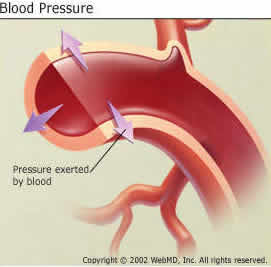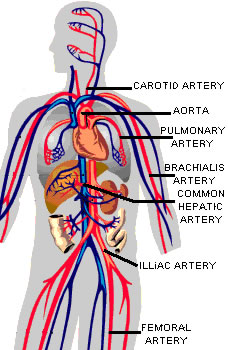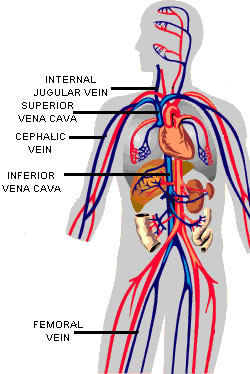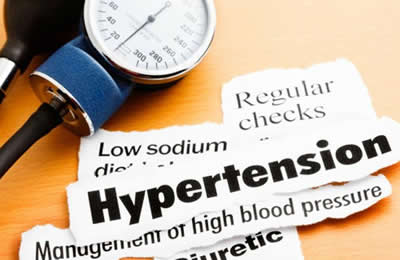How Does Your Blood Pressure Increase?
It’s important to have healthy blood pressure level. But sometime it can increase higher than normal due to several factors. When it is too high, this can be harmful for the health of your body. Hypertension (a medical condition to call high blood pressure) can cause lots of complications from mild health conditions (such as chest pain and dizziness) to serious health problems (such as stroke, heart disease, eye disease, etc). Let’s focus to the issue of factors that can make your blood pressure increases so thus you will have a better idea on how to take appropriate steps for prevention.
Actually, it is the pressure of blood that flows inside the blood vessels. It occurs due to the force of blood pressing against the walls of your blood vessels.
In general, this pressure is divided into two major categories; systolic and diastolic pressure.
Systolic refers to the pressure that occurs when the heart pumping the blood throughout the body. And for diastolic, it is the pressure when the blood back into the hearts (between beats of the heart). For this reason, the number of systolic is usually higher than the diastolic number.
Below is a helpful picture (credit to WebMD) to describe the pressure of blood against a blood vessel.
To get clearly understand on how blood pressure occurs and how the blood circulated throughout the body, it is good idea if you learn the following types of your blood vessels.
All of your blood vessels are important and essential for your cardiovascular system.
But arteries may be the most essential blood vessels since they have crucial function to carry blood rich in oxygen from the heart to all cells and tissues of the body.
Aorta is the biggest artery that originates from your heart and branches out into other arteries (smaller arteries).
Arteries are categorized into two major groups; systemic arteries and pulmonary arteries. Most of arteries are systemic arteries that carry rich-oxygen blood, including for aorta.
And for pulmonary arteries, as the name suggests they are arteries that carry blood from the heart to the lungs.
In the lungs, the blood carried by pulmonary arteries will pick up O2 (oxygen) and then will be carried back to the heart throughout pulmonary veins. Furthermore, there are also arteries called arterioles – they are the smallest arteries that have crucial function in microcirculation.
The following picture (credit to MedValet) can help describe the locations of arteries in the body.
Veins work in opposite way of arteries.
While arteries distribute the blood from the heart to cells of the body, veins carry deoxygenated blood from various sites of your body get back into the heart.
There are 4 major types of veins; systemic, pulmonary, superficial, and deep veins.
Systemic veins are veins that carry blood low in oxygen from the rest of your body. Pulmonary veins are blood vessels where the blood rich in oxygen from the lungs flow back into the left atrium of your heart.
Then for deep veins, they are located deep within the tissues of your muscles. And for superficial veins, they are located close to your skin’s surface.
They are extremely small in size – their diameter is only about 5 to 10 microns. In other words, they are extremely small blood vessels.
They are located in many tissues of your body. They are an intermediary for your arteries and veins. In other words, they distribute blood from arteries to veins. They are most abundant in organs /tissues that are metabolically active such as kidneys and muscle tissues.
Other extremely small blood vessels are sinusoids (the size is about 30 to 40 microns for their diameter).
In general, sinusoids are a medical term used to call very small blood vessels in the bone marrow, liver, and spleen. Both sinusoids and capillaries are composed of endothelium.
The exact cause that triggers the increased blood pressure is still not fully understood. When you ask a doctor how it increases, she /he usually only explain the risk factors of hypertension (risk factors means factors or conditions that can increase your risk of developing high blood pressure).
The following are some of these risk factors.
Some studies found that excessive consumption of alcohol (3 drinks or more per day) can raise blood pressure. Unfortunately, there is still no clearly explanation on how alcohol affects the pressure inside the blood vessels.
According to the American Heart Association, women should drink alcohol not more than a drink of alcohol /day – and not more than 2 drinks of alcohol a day for men.
In addition, alcohol also can increase LDL (bad cholesterol).
As well we know that salt has a unique ability to retain fluid. Experts believe that this is the key of the answer for way too much consumption of salt can cause hypertension.
When you are physically inactive, this can directly affect the performance of your heart in pumping the blood. In fact, people with lack of exercise /poor in physical activity are more likely to get higher heart rates than others who are moderately active or active.
The higher rate of your heart means your heart work harder than usual in pumping the blood. The harder your heart works, the more contraction your heart makes.
As a result, there will be stronger force in pumping the blood and produce more pressure inside your arteries. Moreover, lack of exercise also increases another risk factor of hypertension – such as weight gain /obesity.
More weight /fats you gain, this means you expand the area of where the blood needs to be distributed by your heart. And this can make your heart work harder than it should.
The more weight you gain can force your heart to pump more blood in order to supply more nutrients and oxygen to the increased amounts of tissues.
The increased volume of blood that flow through your blood vessels can bring more pressure against the blood vessel’s walls – as a result, your blood pressure will increase. If you are being obese, losing weight can significantly help lower your risk of hypertension.
Some studies found that too little vitamin D that you get from your diet may affect a specific enzyme made by your livers – an enzyme that has function to help your body in regulating the levels of your blood pressure!
See also foods you should eat more and avoid to help lower blood pressure on this section!
How about with potassium, does lack of it in the diet also have an effect to the pressure inside your blood vessels? Like in the issue of vitamin D deficiency and blood pressure, it’s also still not clear whether lack of potassium in the diet has an effect.
But it’s clear that potassium can help maintain the balance of sodium (salt) in cells of the body – and excessive salt in the bloodstream can increase the blood pressure, as noted before.
So to keep safe, it’s much better to make sure that you get plenty of potassium and vitamin D in your diet.
It’s clear that smoking can be harmful for your entire health. It can cause many complications, including hypertension.
Chewing tobacco is not only harmful to your blood pressure – it also can damage the walls of your blood vessels which then cause a new health problem such as atherosclerosis.







